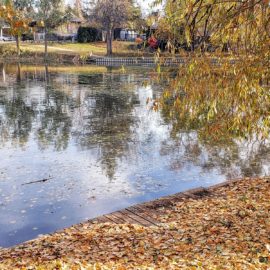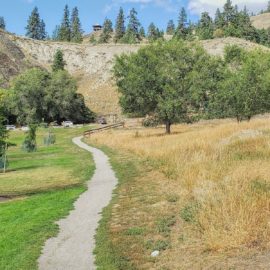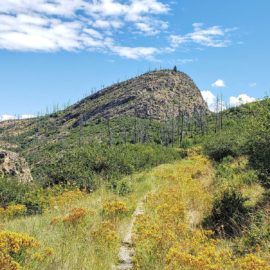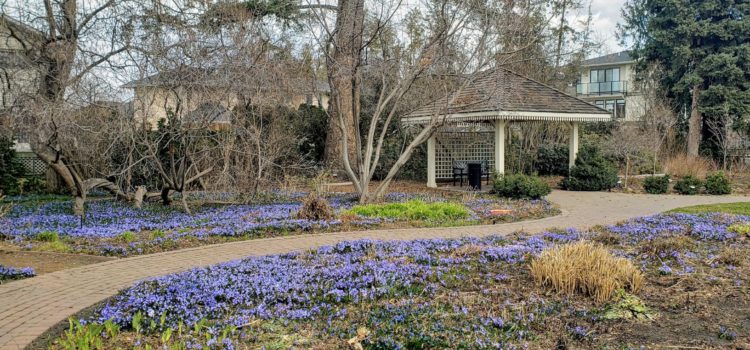
Kelowna Parks Challenge – Trip #32
This week, as part of my Kelowna Parks Challenge, I explored four parks on or near the old Guisachan property. These were the last four parks on the list that were relatively close to Downtown Kelowna. Among them were the beautiful Guisachan Heritage Park and Munson Pond Park, a birder’s paradise.
Read on for my impressions and reflections.
The Trip
The first two parks this week are located on land that used to be part of the Guisachan property. Pre-empted in 1861 by John McDougall, whose third house (1886) is now part of the Guisachan Heritage Park, this land was purchased by Lord and Lady Aberdeen in 1891. They were some of the earliest local landowners to turn their land into an orchard, and their aristocratic prominence did much to encourage their country-people to consider a new life in the Okanagan. After Lord Aberdeen became Governor-General of Canada in 1893, the couple used the property as a vacation home, before selling it to the Cameron family in 1903.
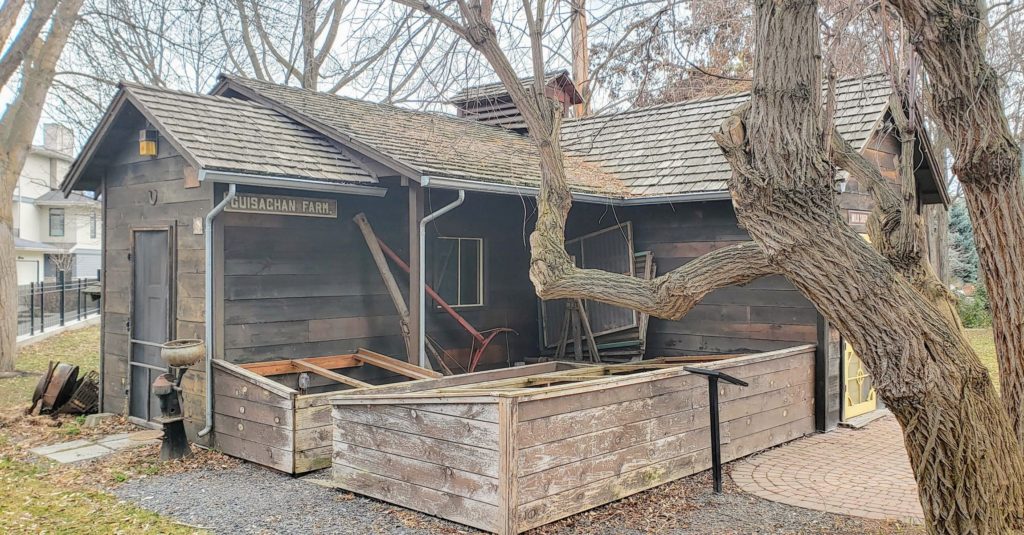
The Camerons farmed the land until 1965 when it was sold for subdivision. The land had been divided between the two branches of the family and each side kept a large lot for their private residence. They lived in those lots until the 1980s when each was taken over by the city, which turned them into parks. The western house now sits in Cameron Park, while the eastern house, which was the Aberdeens’ house, now sits in Guisachan Heritage Park.
Guisachan Heritage Park

This park preserves the beautiful heritage home built for the Aberdeens in 1891, along with its garden, designed by Elaine Cameron, as well as a few other related heritage buildings, including John McDougall’s third house and some of the Camerons’ farm buildings.
The house and garden have been restored and provide a wonderful example of the best Kelowna had to offer in the early twentieth century. The house is now occupied by a restaurant that offers lunch seven days a week and is often rented for weddings and other events.
Washrooms and Drinking Fountains: There is no drinking fountain in this park. There is a washroom in this park, on the south side of the main building.
Dog Rules: Because it is a manicured heritage garden, dogs are not allowed in this park.
Mappin Court Park
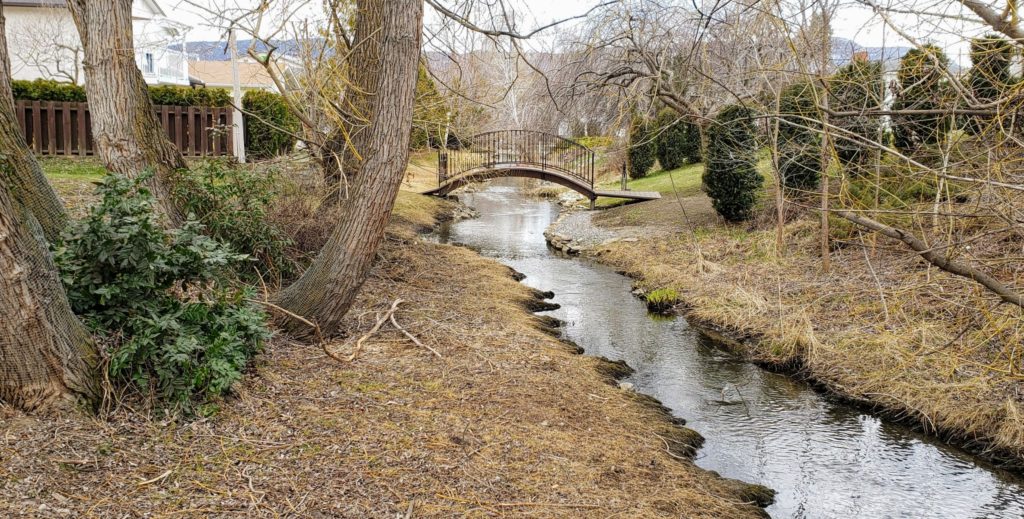
This is a small triangular neighbourhood park. It has no identifying sign, nor any built elements, such as a playground, bench, or picnic table. Its most notable features are a section of the north branch of Fascieux Creek and a sign that warns against illegal activity.
I suppose this park might only be here because the lot was too small to build a house on, but it is a lovely place to get near the creek in the shade of its large willow trees.
Washrooms and Drinking Fountains: There is no drinking fountain in this park. There is no washroom in this park.
Dog Rules: Because there are no trails, dogs are not allowed in this park.
KLO Sports Field

This park comprises a large, rectangular, grass field along KLO Road, set aside for organized sports activities. Currently, it is set up as three soccer pitches, but a few years ago it was arranged as two baseball diamonds.
The sports field is adjacent to the offices of several public services, such as the RCMP, the Okanagan Regional Library, and the Regional District of the Central Okanagan. In the future, the city hopes to expand this park by connecting it to some zoned parkland already present behind those offices.
Washrooms and Drinking Fountains: There is no drinking fountain in this park. There is no washroom in this park.
Dog Rules: Because it is a sports field, dogs are not allowed in this park.
Munson Pond Park

This park preserves a jewel of local naturalism. Originally dug as a gravel pit in the late-1950s, Munson Pond eventually filled with water and now plays an important role in the local ecosystem. Along with Robert Lake, this park is one of the greatest local hotspots for birdwatching.
Acquired by the city in the 1990s, the trails and lookouts in this park were only developed in the last five years, opening these lands to more casual visitors. So far, this hasn’t discouraged the birds.
Washrooms and Drinking Fountains: There is no drinking fountain in this park. There is no washroom in this park.
Dog Rules: Because it is a sensitive natural environment, dogs are not allowed in this park.
Reflections
Heritage Buildings

Kelowna has a heritage buildings register and many great buildings are on it. I have already come across several during my adventures. Somehow, however, few of them are as impressive as the house as Guisachan. Maybe it’s the unusual architectural style, or maybe it’s the excellent Edwardian gardens that surround it. Personally, I think it’s the combination of age and aristocratic means that make it stand out. As far as I can tell, the other buildings of a similar age in Kelowna are much more rustic and rustic-looking.
Habitat Restoration
I love natural parks and anything that encourages local biodiversity, so you know I am more than willing to celebrate any attempt at habitat restoration, no matter how small. In Kelowna, I have already seen one or two interesting examples, the most notable, perhaps, being the restoration of Rotary Marsh. Mostly, however, I have seen subdivisions where the most important ecosystemic features have been preserved, such as in Wilden.
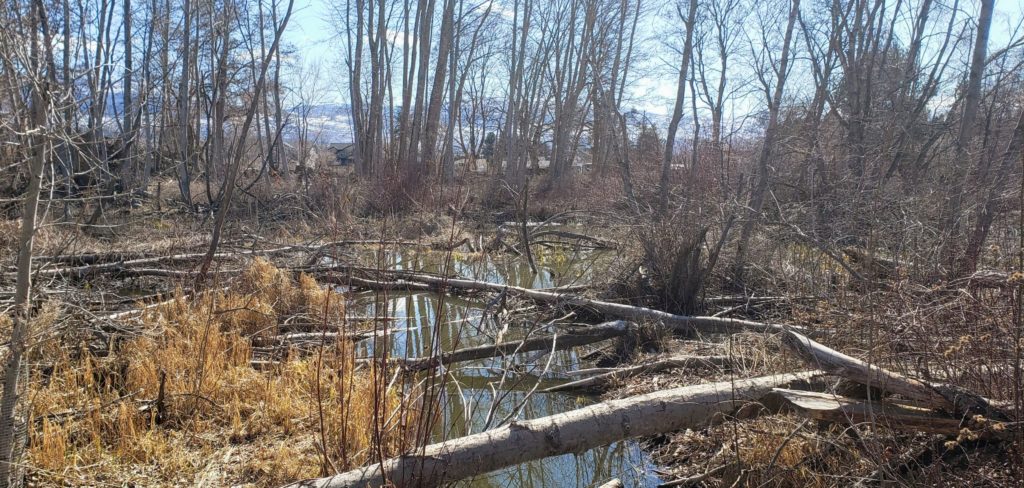
Munson Pond is a fascinating case because it represents a little of both phenomena. On the one hand, it would not be the biodiversity hotspot it is today if the pond had not been dug there. On the other hand, it was not dug as a deliberate act of habitat restoration. To me, this shows that supporting a biodiverse ecosystem might not be as hard as some think. Some creatures are very sensitive to local conditions, it’s true, but many others just want a place to rest, to eat, to sleep, and to raise their offspring. They don’t necessarily care if the spot was created through hundreds of years of forest succession. For many of them, a water-filled gravel pit will do just fine.
Conclusions
Despite the ongoing global pandemic, I remain asymptomatic and was able to get out and visit parks where I could remain physically distant from other visitors. I hope I will be able to continue to do so, though communal health is obviously more important than the successful completion of my personal challenge.
With the addition of this week’s four parks, I have now seen one hundred forty parks in two hundred forty-eight days, or 69% of the parks in 68% of the year. Barring illness or a lockdown, I hope to increase the number of parks I’m seeing over the next little while. I’ll let you know how it goes!

